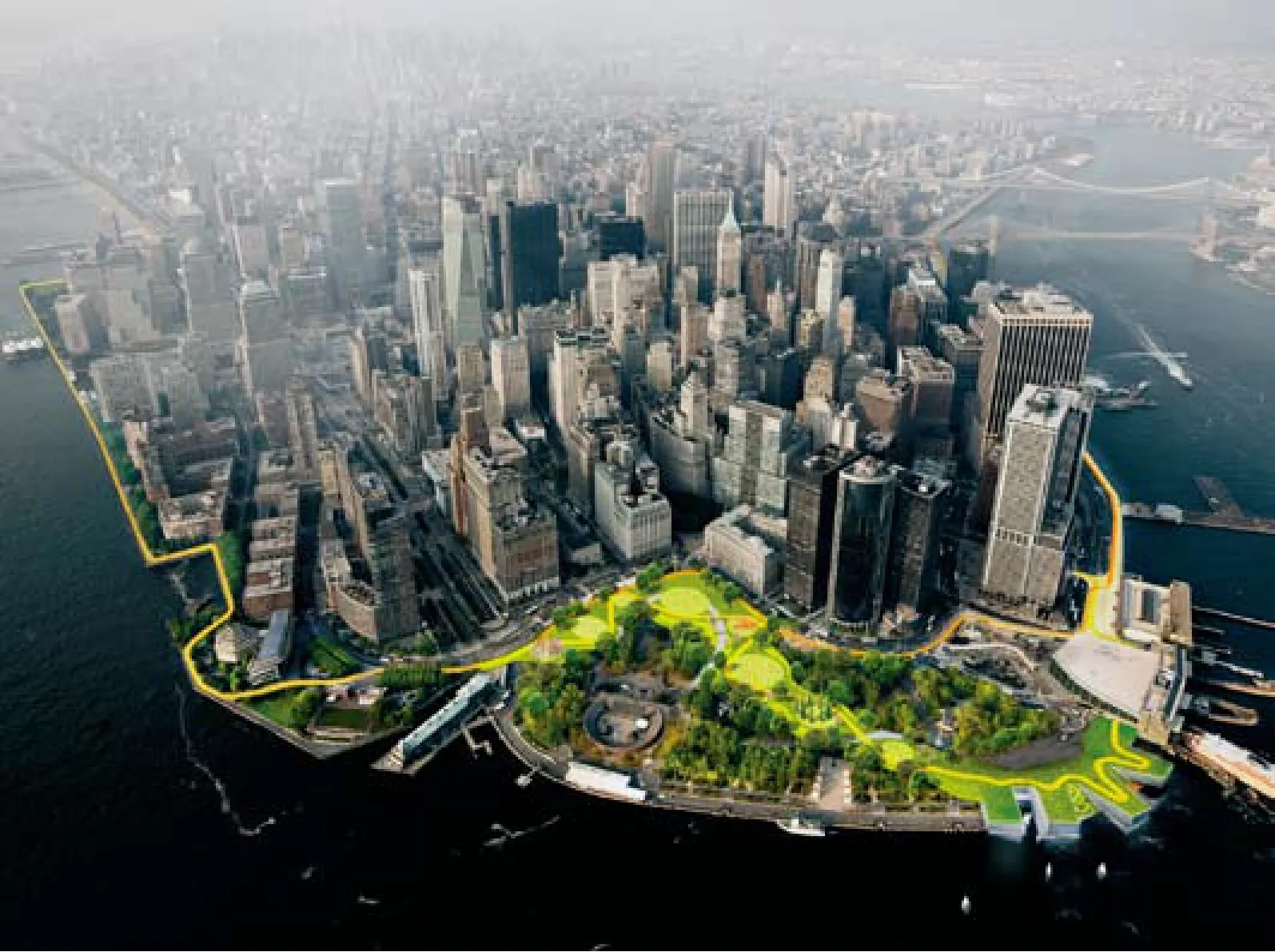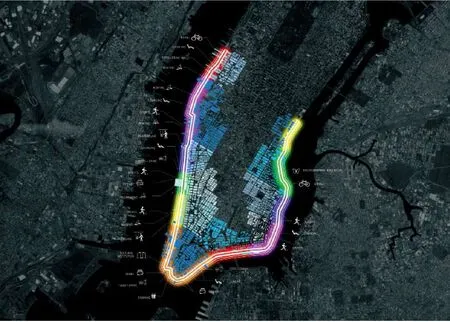第四届全球豪瑞奖铜奖:城市防洪基础设施,纽约市,美国
2016-12-21主要设计者乌维伯格曼比亚克因格尔斯BIG建筑事务所马泰斯One建筑事务所
主要设计者:凯-乌维·伯格曼,比亚克·因格尔斯/BIG建筑事务所;马泰斯·鲍/One建筑事务所
第四届全球豪瑞奖铜奖:城市防洪基础设施,纽约市,美国
主要设计者:凯-乌维·伯格曼,比亚克·因格尔斯/BIG建筑事务所;马泰斯·鲍/One建筑事务所

1 鸟瞰/Aerial view
评委评语
尽管该项目方案还存在争议,但是它的优点在于提出了将基础设施转变成面向公众开放的城市空间的构想和承诺。一方面,评审团赞赏方案中大胆提出的通过构建能够为社会提供剩余价值的建筑物来应对气候变化带来的影响,即:将问题转换成机遇。
另一方面,该方案中提出解决气候变化的影响而非根源性问题,又显得过于被动,缺乏积极性。抛开争议不论,该项目通过建筑和城市建设方案表明了一种政治立场,那就是气候变化已不容逃避,也不容被弃之为环保人士的凭空臆想,真实的解决方案切实存在。此外,评审团认为该项目模式有可能在其他地方推广应用。那就是通过以纽约方案为原型进行学习,从而为全球范围内易于遭受灾害的地区,尤其是那些经济资源有限的地区,寻找到类似的解决方案。

2 “干线”包含了一个专门为每个街区和社群设计的长21km的保护带/Te Dryline contains a protective ribbon: 21 km of flood protection tailored to each neighborhood and the community it serves.
Jury Appraisal
Notwithstanding the merit of the proposal's vision and its commitment to translate an infrastructure into an urban space accessible to all, the project was nonetheless controversially discussed. On the one hand, the jury appreciated the scheme's bold proposition to tackle the ramifications of climate change by means of a construction that offers a surplus value to society – turning a problem into an opportunity.
On the other hand, the issue was raised as to whether the project was not more reactive rather than proactive, addressing the effects of climate change instead of its root causes. Debate aside, the project makes a political statement by means of an architectural and urban proposition, arguing that climate change indeed can no longer be suppressed or discarded as a figment of environmentalist imagination and that tangible solutions truly exist. Moreover, the jury considered the project's potential as model to be applied in other contexts, with the case of New York understood as a prototype from which to learn in order to pursue similar strategies in susceptible regions around the globe, including, most importantly, regions with limited economic resources.
4th Global Holcim Awards Bronze: Urban Flood Protection Infrastructure, New York City, USA
Main Authors: Kai-Uwe Bergmann, Bjarke Ingels/BIG–Bjarke Ingels Group; Matthijs Bouw/One Architecture
